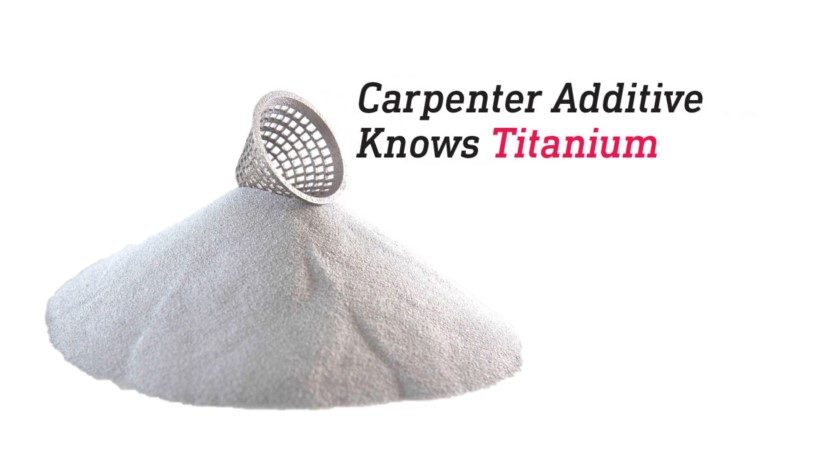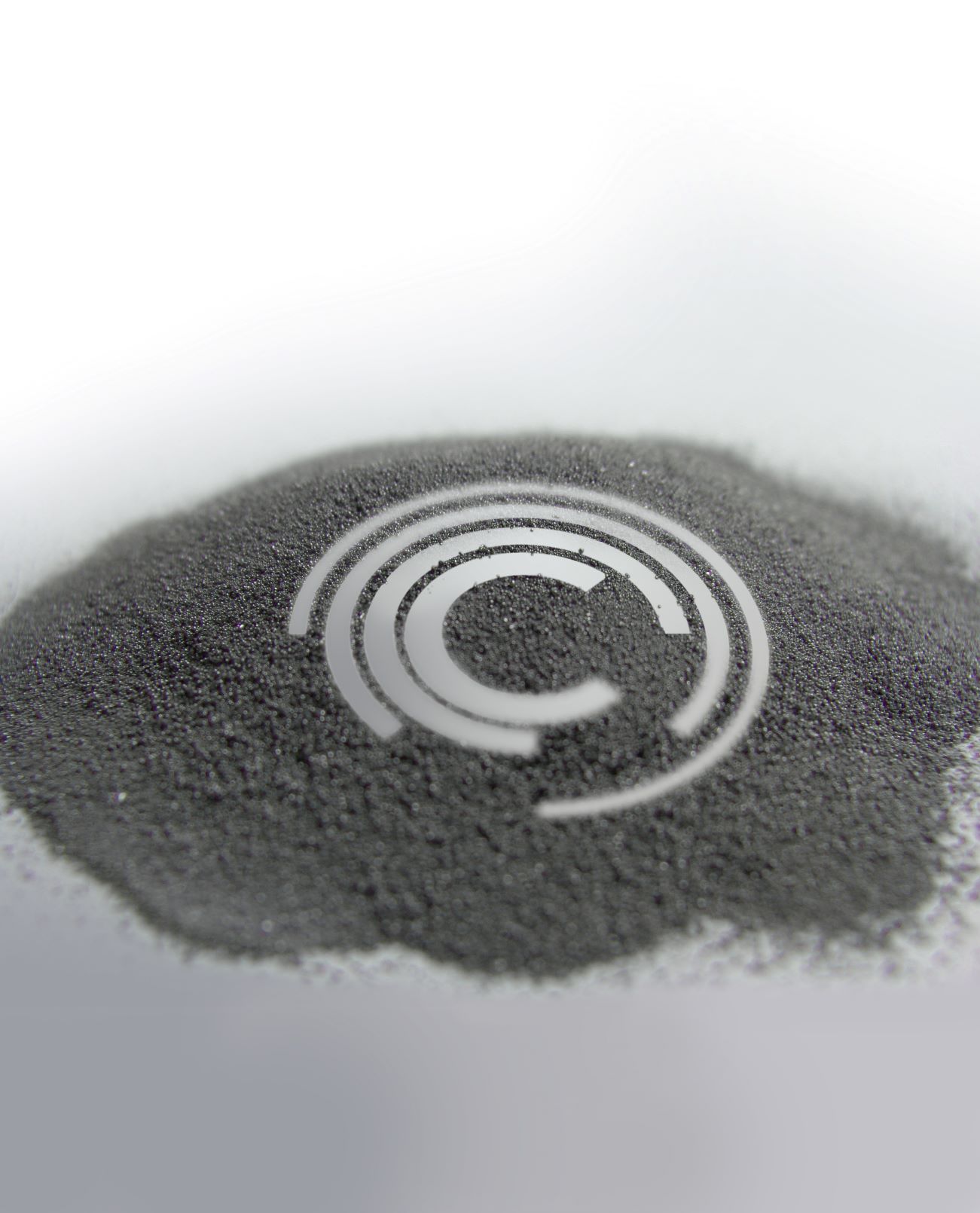
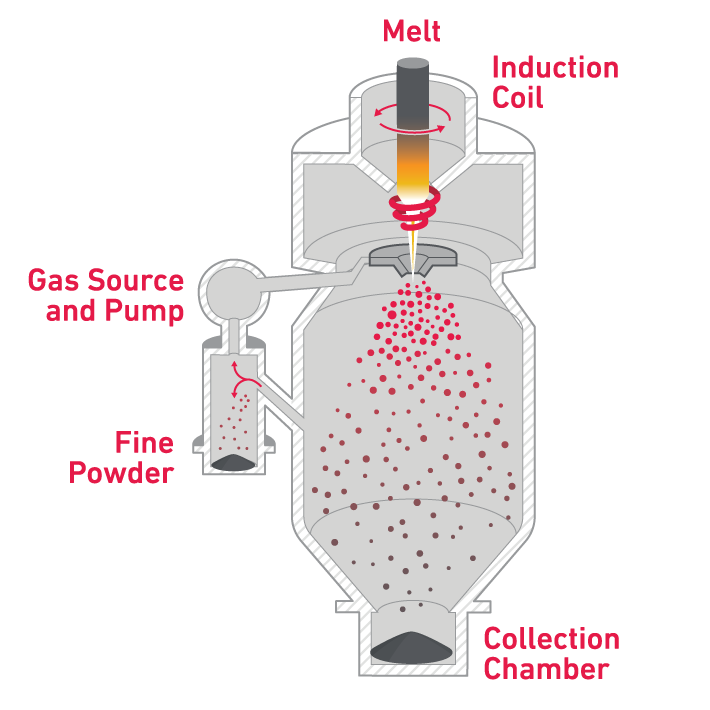
Electrode Inert Gas Atomization (EIGA) continuously melts a pre-alloyed Ti64 rod in an induction coil that falls into a gas nozzle to produce highly spherical powder particles. EIGA powder serves as an alternative to plasma atomized powder, using more economical bar feedstock.
The absence of any refractory components
in the EIGA process minimizes the risk of
high-density contaminants. The EIGA supply chain includes less feedstock processing, resulting in lower oxygen levels.
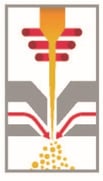
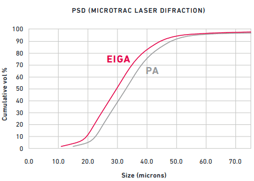
Measured through helium pycnometry, the true density test results demonstrate that powder from the two melt methods are equivalent in terms of internal porosity.
Flowability tests provide quantitative measurements of powder movement and are the most robust methods available to predict a material’s behavior during build jobs. Test results demonstrate the EIGA sample having superior flowability in a testing environment similar to a L-PBF AM machine, despite having a finer PSD.
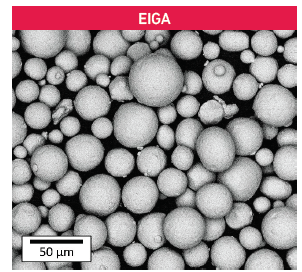
Combining more than a hundred years of metallurgical leadership with unrivaled knowledge of additive manufacturing technologies, Carpenter Additive is committed to helping customers solve material and process challenges. Developing end-to-end solutions to add consistency, reduce risk, and continuously improve additive manufacturing production, Carpenter Additive offers high quality metal powder, a suite of solutions for material traceability, and contract manufacturing from powder to part.
